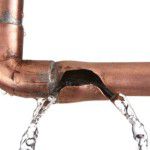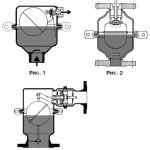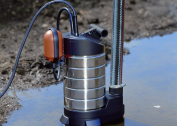Water pipes are designed to transport water, so there is no place for air here. However, air enters the pipes. Why is this happening and what is the danger of air in the water supply systems of private houses? Is it possible to prevent its penetration and how to remove air from the water supply system?
What is the danger of air in the water supply
-
Bubbles of air split the water stream, causing inconvenience to the consumer. Cranes constantly “spit”, behave unpredictably;
- Air congestion accumulates in the same places, causing rapid destruction of pipes and adapters. In danger of turns and bends of pipes, where there is an opportunity to linger in the air bubble;
- Air in water pipes can cause water hammer. An unpleasant phenomenon gradually destroys the pipes, causing longitudinal cracks. Over time, the pipe bursts in the damaged area. For a long time, the owner may not notice the destruction, this is the main danger of water hammer.
Why does air appear in the water supply
There are two reasons for the appearance of air in the home's water supply system:
- Outside. Through leaks, air enters the pipes;
- From the inside. In a stream of water passing through the pipes, approximately 30 grams of air per 1 ton of water are dissolved. Gradually, air is released. The slower the water flows, and the hotter it is, the faster the process. That is, in hot water systems, the likelihood of air congestion is higher.
In the water supply systems of private houses, air appears for the following reasons:
- when the water level drops, air can suck through the check valve;
- poorly tightened fittings with rubber seals;
- cavitation is observed in hot water supply systems: steam is formed, air bubbles collect in the water, forming voids or caverns;
- air in the water pipes remained from the first start of the equipment.
In air bubbles, oxygen is 30% more than in atmospheric air. This explains the high oxidizing ability of air in hot water systems. Air bubbles can be of various shapes: spherical - small, not more than 1 millimeter in diameter, mushroom-shaped, oval.
In vertical pipes, bubbles rush up or are distributed throughout the volume. In horizontal highways, they stop at the highest points where they conduct destructive work.
When the water velocity in the pipes is more than 0.5 meters per second, the bubbles move without stopping. When the speed exceeds 1 meter per second, the bubbles break into very small bubbles. It looks like an emulsion of water and air. Air bubbles in the water supply system of a private house begin to collapse at a fluid velocity of 0.25 meters per second. If it is lower, traffic jams can stagnate in some places for a long time.
How to get rid of air in pipes
If there is already air in the water supply system of a private house, but it is not equipped with vents, it is necessary:
- Turn off the pumping station.
- Open all drain taps, discharge water and air from the water supply system. Then the pipes are filled again.
You can remove air from the water supply system once and for all with the help of bleed or drain devices:
- mechanical valves such as the Majewski valve;
- automatic air vents;
- ball valves;
- gates.
Mechanical valve device for venting from the water supply system is as follows: a cylindrical box, closed with a lid on top, a thread for connecting to the water supply from below. In the middle of the cover is a cap on the thread. A ball-shaped plastic float is suspended inside the cylinder. If there is no air in the hot water system, the ball rises to the hole in the plug and closes it tightly under pressure from the network. As soon as air enters the device, the ball leaves and air is discharged. Air can penetrate the system through vents, which is useful when repairing or inspecting networks and speeds up water drainage.
Air-removing devices are installed in certain places of the water supply system: in the uppermost extremities, on bends or kinks. That is, where the likelihood of air accumulation is increased.
Homemade Air Storage
In rural water pipelines, air often flows interspersed with water. Using such a water supply is difficult and inconvenient, and automation does not always cope: if there is a lot of air, water flows over a fountain directly from the valve. Therefore, instead of an automatic venting device for air discharge in the water supply system, air accumulator. It can be done independently, it is a tank with a branch pipe and a tap. The diameter of the drive should be 5 times the diameter of the water pipe, then it can work efficiently.
An air accumulator is installed at the highest point in the water supply system where it is convenient to bleed air by hand. Air storage tanks are widely used in multi-storey buildings in hot water systems.
Automatic air vents
Devices for removing air from plumbing systems are widely marketed. Float valves this continuous air vents. They protect the working system from the accumulation of air and gases. When the pressure in the system drops to atmospheric, the float valve lets air into the pipes. To eliminate the cause of the appearance of air in the water supply system of the house, an additional check valve is additionally installed. There are models of air vents already equipped with a check valve.
Start-up air vents They are used to remove air during filling the system with water or to start air during drainage operations.
Combined air vents possess the properties of both devices described above.
When choosing an air vent, the volume of exhaust air is taken into account. This indicator can be found in the characteristics of the device. Do not pick up an automatic air vent more powerful. Working half-heartedly, it will wear out faster.
For the correct operation of the air vent, the working pressure in the water supply and the quality of the fluid are important. If the resource density is below 960 kilograms per cubic meter, special design floats are installed.
A video clip about the simplest air vent - the Majewski valve:






